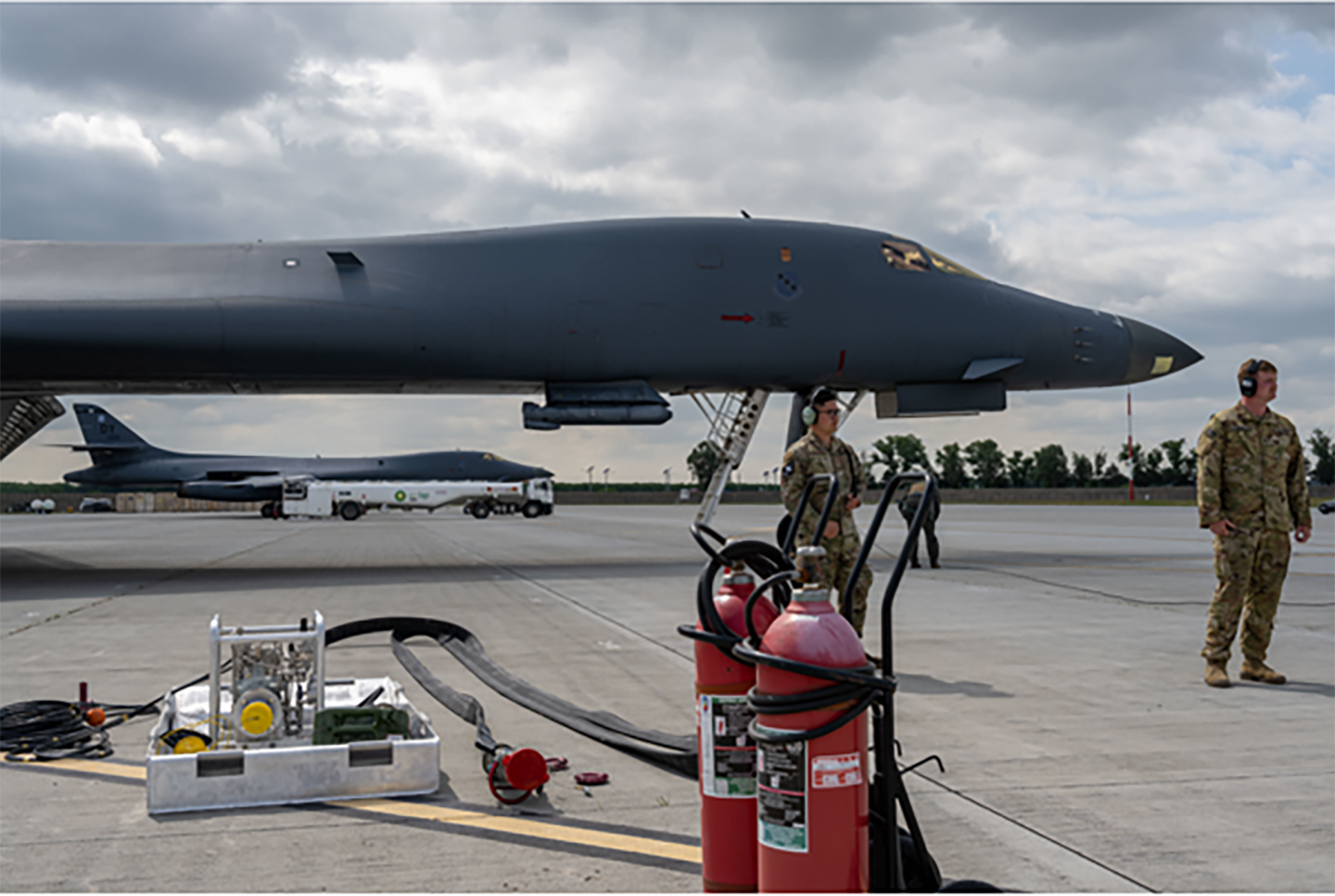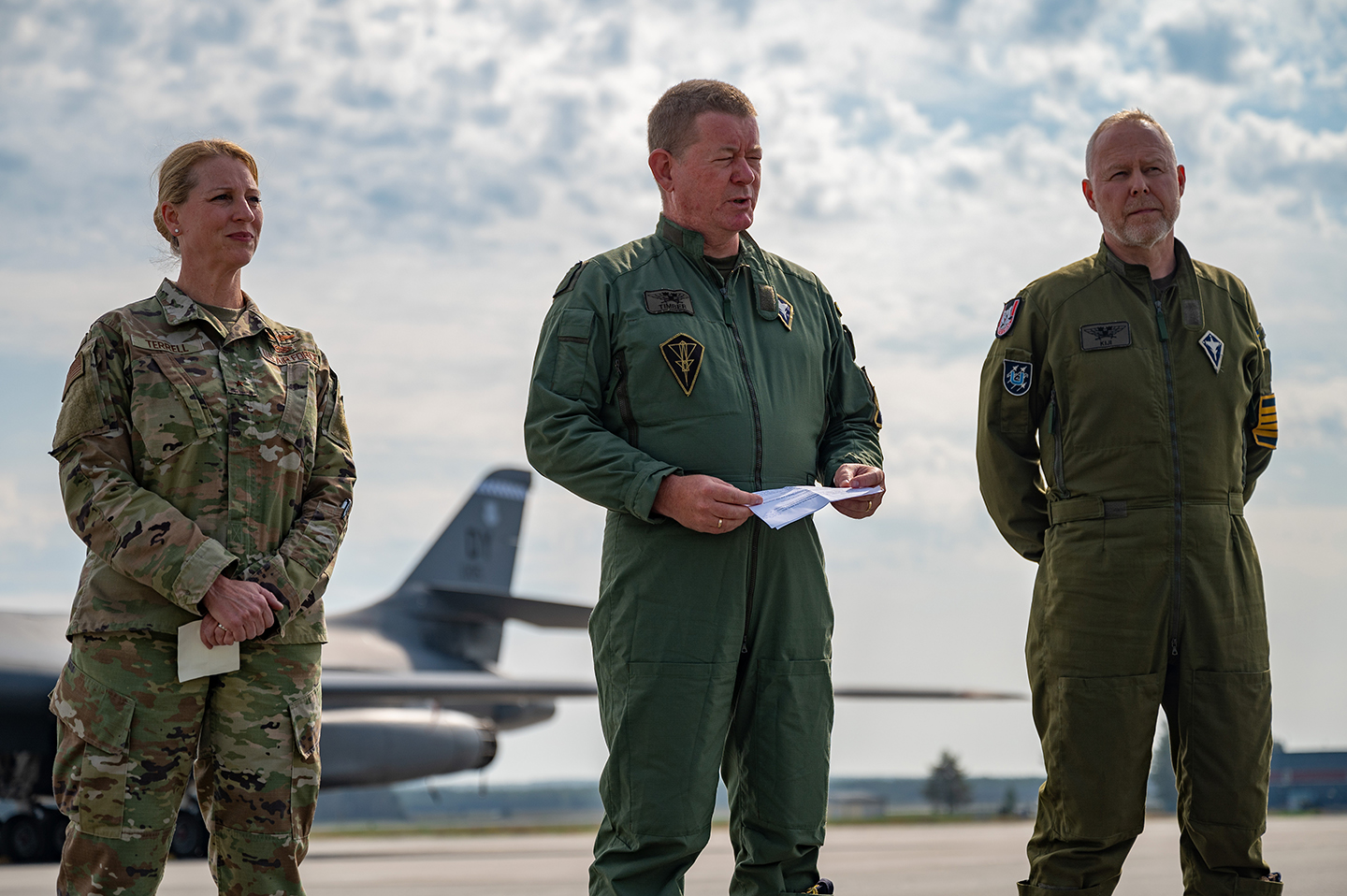U.S. STRATEGIC COMMAND
The recent completion of a monthlong rotation by U.S. Air Force B-1B Lancers to RAF Fairford, United Kingdom, as part of the Bomber Task Force Mission demonstrated the United States’ commitment to deterring aggression and promoting ally and partner cohesion globally.
To maximize training opportunities and sharpen homeland defenses, the returning bombers were intercepted by North American Aerospace Defense Command (NORAD) aircraft as they entered the Air Defense Identification Zone off the coast of North America.
The aircrew and maintenance personnel of these supersonic bombers, from Dyess Air Force Base, Texas, showcased their ability to rapidly deploy and integrate with allies and partners across Europe and the Middle East. Throughout their rotation, the B-1B Lancer crews solidified relationships and enhanced coalition capabilities in response to potential threats to freedom of maneuver and navigation. This seamless integration and strategic cooperation set the stage for future rotations, bolstering alliances and partnerships across the globe.
Honing air-to-ground capabilities
For the first time, two B-1B Lancers, along with five partner nations and other coalition forces, practiced weapons employment against multiple simulated targets during a mission in the U.S. Central Command area of responsibility.
During this training mission, the bombers employed live GBU-38 Joint Direct Attack Munitions and live AGM-158A Joint Air-to-Surface Standoff Missiles.
“These bomber missions represent the U.S. commitment to our partners and showcased our ability to deliver overwhelming power at a moment’s notice,” said U.S. Air Force Lt. Gen. Alexus Grynkewich, 9th Air Force (Air Forces Central) commander, and Combined Forces Air Component commander for U.S. Central Command. “Together, we are operationalizing concepts designed to make us more agile in our execution, more strategic in our deterrence and more resilient in our capability. Today was a demonstration of that capability and the strength of our partnerships.”

Hot-pit refueling in Romania
The next significant accomplishment for the Bomber Task Force happened when two B-1B Lancers engaged in hot-pit refueling for the first time at Mihail Kogalniceanu Air Base in Romania. Hot-pit refueling, which is a technique used to refuel aircraft while the engines are running, enhances combat airpower sustainability and demonstrates the effectiveness of agile combat employment strategies.
“Capabilities like this facilitate not only rapid deployment and relaunching but also enhance flexibility across theaters,” said Capt. Joshua Dvorak, bomber task force liaison officer.
Historic landing in Sweden
Another unprecedented event took place when two B-1B Lancers touched down at Lulea Kallax Airbase, Sweden. This marked the first-ever landing of U.S. strategic bombers in Sweden and reflected the deepening friendship between the nations. Moreover, the landing underlined the collective defense of Europe, emphasizing the commitment of the U.S. to its partners and allies.
“The U.S. and Sweden have a long history together in exercises and training, bilateral and multilateral security cooperation, and operations, of which today is one key example,” said U.S. Air Force Brig. Gen. Bryony Terrell, U.S. European Command deputy director for strategic plans and policy.
Defending the homeland
To maximize combatant command training opportunities, the returning bombers were intercepted by NORAD aircraft as they approached the coast of North America during air-defense Operation Noble Defender. NORAD units executed maneuvers designed to defend the eastern approach of North America from simulated cruise missile threats. CF-18 aircraft from the Canadian NORAD region, F-15C and KC-135 aircraft from the Continental U.S. NORAD region, in addition to the B-1s, all participated to validate the missions of aerospace warning, aerospace control and maritime warning. (Pictured: NORAD aircraft intercept two B-1 Lancer bombers as they enter the Air Defense Identification Zone off the east coast of North America during Operation Noble Defender.)

Promoting interoperability
The Bomber Task Force mission, operating out of RAF Fairford since late May, actively participated in multiple exercises spanning multiple continents. These joint exercises and training opportunities contribute to enduring and strategic relationships with allied and partner nations.
Interoperability, a key objective, does not solely rely on shared military equipment but also on the ability of nations to connect, communicate and execute operations with one another.
By demonstrating the ability and agility to integrate forces and equipment across the globe, the U.S. and its allies and partners ensure their preparedness to confront a wide range of global challenges.


Comments are closed.